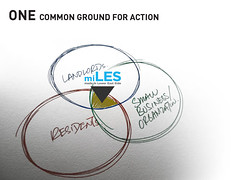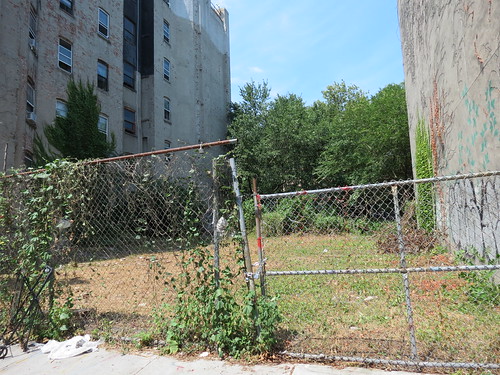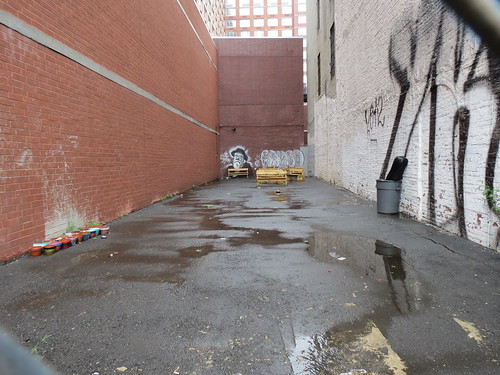Imagine the graffitied lot at 35 Cooper Square hosting free theater by La MaMa. Or how about food vendors setting up at the corner plot where a historic row house was demolished over a year ago.
That’s what Eric Ho has in mind for some of the 212 empty lots and storefronts he has identified in the East Village and Lower East Side.
“How can we transform these underutilized spaces into valuable resources for local residents?” Mr. Ho, an architect, asked in a mission statement for Made in Lower East Side (MiLES). The project, dedicated to filling vacant lots with community groups, artistic events and small vendors, has been in the works since February and is still in its nascent stages. Earlier this month, Mr. Ho received what he said was a positive response from Community Board 3’s Economic Development committee, and last week he met up with graduate students from New York University’s Wagner School to gauge their interest in becoming involved.
Mr. Ho isn’t the first to focus on the fenced-off eyesores. Last September, Manhattan Borough President Scott Stringer released a report indicating that the area covered by Community Board 3, which includes the East Village and Lower East Side, had the second highest number of stalled construction sites.
The report recommended that the sites, two thirds of which showed signs of vandalism, could be used in creative ways. “New York, like other cities, could turn its stalled sites into a dazzling display of new and imaginative land uses that, if only temporarily, could revitalize neighborhoods throughout the five boroughs,” the report said. “In place of rubble-strewn lots, there could be farmers markets, gardens and cafes, to name just a few possibilities.”
Of course this won’t be an easy task, as Mr. Ho will have to balance the interests of landlords, residents, community groups and business owners.
“We see a huge opportunity to leverage the creativity, knowledge and social capital that are already in place in a community, for developments that they can take ownership of,” he said. “It represents a parallel model of thinking about urban development, which is traditionally capital-centric.”
One of the group’s core partners is the Fourth Arts Block collective, which already hosts street festivals such as the upcoming FAB! Festival. Tamara Greenfield, the director of FAB, said she hoped MiLES would be a part of the festival in late September.
Mr. Ho has chosen the cultural district on Fourth Street between Bowery and Second Avenue as one of two “prototype blocks” that are ideal for his project, since the area around them includes established cultural organizations as well as a number of empty lots. (The other area is centered around Orchard Street, near the Tenement Museum, the Lower East Side Business Improvement District, and the Hester Street Collaborative.)
On Fourth Street, Mr. Ho hopes that groups like La MaMa and Rod Rodgers Dance Company will provide programming for nearby vacant spaces. For now, though, the group, which is dependent on volunteers, is still searching for funding to get it off the ground.
In the meantime, Mr. Ho shared with The Local the top three lots in the neighborhood that he thinks have the most potential for transformation.
537 East 11th Street between Avenues A and B
“The most naturally beautiful”
Situated behind a park, the site has its own natural vegetation, which resembles the High Line before it was transformed. A barren and wild nature remains in the midst of the urban fabric.
19 East Third Street between Bowery and Second Avenue
“The most culturally active”
Situated behind East Fourth Street, this site has no vegetation, and has a hard layer of gravel on it. However, from time to time, it is packed with concertgoers. It is a vibrant, active lot during specific times of the summer and could evolve into something much bigger, depending on its owners.
271 Bowery between East Houston and Stanton Streets
“The most visibly vacant”
The prime location right next to Whole Foods makes one wonder why it is vacant. The lot is actually owned by Department of Housing Preservation and Development and University Settlement has a temporary license to use it for events. So, from time to time you will see sporadic usage of it.
Editor’s Note: A previous version of this post indicated that Community Board 3’s Economic Development committee “supported” the project. The wording of that statement has been changed to make clear that the committee did not vote for or against supporting the project during what was merely an informational presentation.







